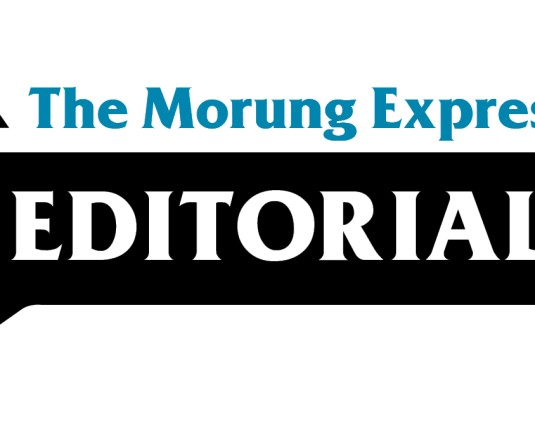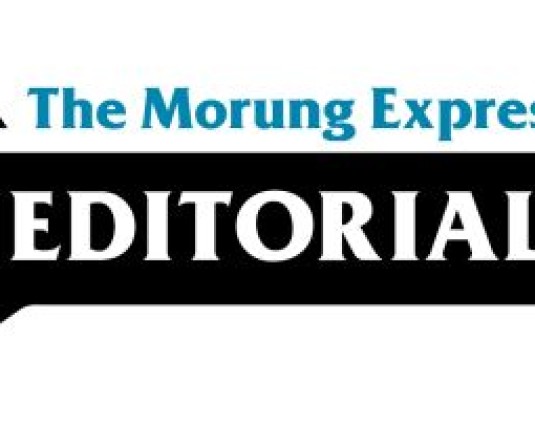
Dr Asangba Tzudir
ONOE, the acronym for the One Nation, One Election means all Indians will vote in Lok Sabha and State Assembly elections in the same year, if not at the same time. The central idea envisaged is to synchronize the timing of Lok Sabha and state Assembly elections across all states to reduce the frequency of polls throughout the country. A committee led by former President of India Ram Nath Kovind submitted a report to President Droupadi Murmu, noting that Lok Sabha and Assembly polls could be held together with local body elections, and in his address to Parliament in January 2018, termed it as one of critically needed reforms, stating that citizens are concerned about frequent elections in one part of the country or another, and which adversely impacts the economy and developmental process. At present, there are a few States like AP, Sikkim, Odisha that vote for a new state government at the same time as the country selects a new union government.
Historically, ONOE was in practice till 1967, but was disrupted due to defections, dismissals, and dissolutions of government, etc., and due to which several legislative assemblies dissolved post-1960 leading to separate polls for Lok Sabha and State assemblies. Once again, the idea of ONOE appeared in the first annual report of the Election Commission in 1983, vouching for holding simultaneous elections to reduce expenditure, for effective use of human resources and the fact that frequent elections affected the day-to-day functioning of the government, both at the state level and the Centre, creating hardship for common people.
The topic was revived by the 170th Report of the Law Commission, submitted in 1999, however, with the admittance that it could not be achieved overnight in the prevailing circumstances. It however gained momentum with the manifesto of the BJP for the 2014 Lok Sabha election. What followed then was the 79th 2015 Report of the Department Related Parliamentary Standing Committee on Personnel, Public Grievances, Law and Justice, recommending an alternative and practicable method of holding simultaneous elections, which involved holding them in two phases twice in every five-year cycle.
This was followed by a draft report of the Law Commission in 2018, which also recommended holding of simultaneous elections noting that for holding simultaneous elections, amendments to the Constitution, the Representation of the People Act, 1951 and the Rules of Procedure of Lok Sabha and State assemblies would be required. ONOE requires amendment to the Constitution and that amendment is being ratified by the governments of all states and UT’s, and possibly, major political parties.
A big challenge is what to do if a state, or even the central government, fails a no-confidence motion or is otherwise dissolved before its term ends. There are five Articles that come into play in this connection - Article 83 (term of Parliament); Article 85 (dissolution of Lok Sabha by the President); Article 172 (duration of state legislatures); and Article 174 (dissolution of state legislatures), as well as Article 356 (imposition of President's Rule). The ECI in 2015 had submitted a feasibility report on the ‘One Nation, One Election’ idea, in which it suggested that no-confidence motions include nomination of a new Chief Minister, or Prime Minister, to take over should the incumbent lose. The new leader must then immediately face a test, and in the event of an early dissolution, a short-term election to choose a government for the remainder of the term should be conducted.
Bengal Chief Minister Mamata Banerjee was one of the first to vocally raise objection against ONOE where she called the proposal “a design to subvert the basic structure of the Constitution” and create a system to allow “autocracy (in) a democratic garb to enter the national public arena”. Tamil Nadu Chief Minister MK Stalin, also opposed it as a “threat to democratic decentralization” saying, “It is impractical, not enshrined in Constitution of India.” AAP too struck down the idea where Arvind Kejriwal said it would damage the idea of parliamentary democracy and the basic structure of the Constitution. The Congress has also slammed it as “undemocratic”, with party President Mallikarjun Kharge challenging the government’s rationale on savings.
However, there are real challenges in relation to dissolution of Houses, President’s Rule, or even a hung Assembly or Parliament and which still has not clarity. Still, one of the biggest challenge would be the humongous resources of various forms required in one go, though proponents will argue that in having simultaneous elections governments will not have to be in election mode all the time, or model code of conduct bringing many things to a standstill and many other related hindrances besides being cost effective.
Now on the political aspect, ONOE is a part of BJP’s manifesto, to make it a reality having set up a High Powered Committee to examine the issues of conducting simultaneous elections. Any sharp observer will see the interconnectedness of events in the pursuit of absolute power and ‘dictatorial’ control under a ‘economically streamlined democratic garb’ - the construction of Ram Temple in Ayodhya; and the abrogation of Article 370, and the now pursued Uniform Civil Code (UCC), and ONOE – One Nation, One Election. The project of simultaneous elections, on one level is debated on its pros and cons, but the wider picture looks like a double engine game of centralizing power in the centre-state dichotomy.
(Dr Asangba Tzudir writes a weekly guest editorial for The Morung Express. Comments can be mailed to asangtz@gmail.com)





